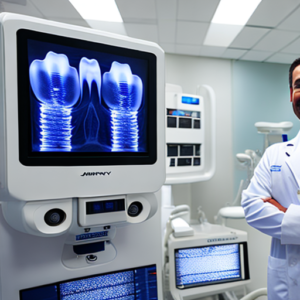Do you experience discomfort or pain while brushing your teeth? Many people with sensitive teeth find traditional toothbrushes either ineffective or, worse, exacerbate the problem. The good news is that electric toothbrushes offer a significantly gentler approach to cleaning, but not all electric brushes are created equal. The core difference lies in their movement – oscillating vs. rotating. Choosing the right technology can dramatically impact your oral health and comfort levels. This comprehensive guide will delve into these technologies, helping you understand which one is best suited for your sensitive teeth and overall oral hygiene needs.
Introduction to Electric Toothbrushes and Sensitivity
Electric toothbrushes have revolutionized oral care, offering increased cleaning power and often promoting better brushing habits. However, for individuals with sensitive teeth or gums, the aggressive scrubbing action of some electric brushes can be detrimental. Studies show that up to 70 percent of adults experience some level of tooth sensitivity – this is usually caused by enamel erosion, receding gums, or exposed dentin. Using a brush too aggressively can worsen these conditions, leading to increased pain and discomfort. This post will break down the two primary technologies used in electric toothbrushes: oscillating and rotating, explaining how they work and which might be more suitable for those dealing with sensitive teeth.
Oscillating Technology: The Back and Forth Approach
How Oscillating Toothbrushes Work
Oscillating toothbrushes, most notably from brands like Philips Sonicare, utilize a small round brush head that pulsates or “oscillates” – meaning it moves back and forth at high speed. This movement creates fluid dynamics in the mouth, which helps to dislodge plaque and debris without relying heavily on forceful pressure. The key here is the sonic vibrations created by these rapid movements. These vibrations are typically around 30,000 – 60,000 strokes per minute – far more than you could achieve manually.
Real-world Example: A study published in the Journal of Periodontology found that oscillating toothbrushes were significantly more effective at reducing plaque accumulation and gingivitis compared to manual brushing, particularly when used with proper technique. The fluid dynamics created by the oscillations help clean along the gumline effectively.
Advantages for Sensitive Teeth
- Gentle on Gums: The oscillating movement is less abrasive than rotating brushes, minimizing irritation and inflammation of gums.
- Effective Plaque Removal: Despite the gentle action, oscillating technology remains highly effective at removing plaque.
- Quiet Operation: Sonicare toothbrushes are known for their quiet operation, which many users with sensitive hearing appreciate.
Rotating Technology: The Circular Spin
How Rotating Toothbrushes Work
Rotating toothbrushes, primarily from Oral-B, use a brush head that rotates in a circular motion. These brushes typically have nylon bristles arranged around a central hub that spins at speeds ranging from 2,500 to 4,000 rotations per minute. The rotating action physically scrubs the teeth surface with each rotation.
Case Study: A clinical trial conducted by Procter & Gamble demonstrated that Oral-B rotating brushes achieved a higher percentage of plaque removal than manual brushing in a significant number of participants. However, it’s crucial to note this often comes at a potentially higher level of pressure if not carefully controlled.
Advantages and Disadvantages for Sensitive Teeth
- Powerful Cleaning: Rotating technology is known for its robust cleaning power due to the direct scrubbing action.
- Potential for Abrasiveness: The rotating motion can be more abrasive than oscillating, potentially irritating sensitive teeth and gums if used with too much pressure or an overly firm brush head.
- Pressure Sensor Technology: Many Oral-B models feature pressure sensors that alert you when you’re brushing too hard – a critical factor for those with sensitivity.
Oscillating vs. Rotating: A Detailed Comparison
| Feature | Oscillating (e.g., Philips Sonicare) | Rotating (e.g., Oral-B) |
|---|---|---|
| Movement | Back and forth pulsations | Circular rotation |
| Speed | 30,000 – 60,000 strokes per minute | 2,500 – 4,000 rotations per minute |
| Pressure Sensitivity | Generally less abrasive; relies on technique | Can be more abrasive if excessive pressure is applied. Often includes pressure sensors. |
| Gum Health | Gentler, minimizes gum irritation | Potentially irritating if used aggressively |
| Cleaning Power | Highly effective with proper technique | Powerful cleaning action |
Choosing the Right Brush for Sensitive Teeth
Key Considerations
- Brush Head Size: Smaller brush heads allow for better maneuverability and access to difficult areas.
- Bristle Softness: Always opt for brushes with soft or extra-soft bristles.
- Pressure Sensor: A pressure sensor is highly recommended, especially if you’re prone to brushing too hard.
- Oscillation vs. Rotation: For sensitive teeth, oscillating technology is often considered a safer starting point due to its gentler action.
Recommended Models (as of late 2023 – subject to change)
Here are a few models frequently recommended for individuals with sensitive teeth:
- Philips Sonicare ProtectiveClean Series: Known for its gentle cleaning and pressure sensor.
- Oral-B Pro 1000 Advanced:** Includes a pressure sensor and oscillates at a lower speed.
- Colgate Hum Smart Electric Toothbrush:** Features smart technology that learns your brushing habits and adapts the intensity accordingly.
Conclusion: Finding Your Perfect Brush
Ultimately, the best electric toothbrush for sensitive teeth depends on individual preferences and needs. Oscillating technology generally offers a gentler approach, while rotating technology can be effective but requires careful attention to brushing pressure. Prioritize brushes with soft bristles, pressure sensors, and smaller brush heads. Remember that proper brushing technique is just as important as the type of toothbrush you choose – maintaining a gentle, circular motion and avoiding excessive pressure are key to preventing sensitivity.
Key Takeaways
- Understand the Technology: Knowing the difference between oscillating and rotating movements is crucial for making an informed decision.
- Pressure Control is Critical: Regardless of the technology, avoid brushing too hard – this is the primary cause of tooth sensitivity.
- Soft Bristles are Essential: Always choose brushes with soft or extra-soft bristles to minimize irritation.
- Listen to Your Body: If you experience any pain or discomfort while brushing, stop and consult your dentist.
Frequently Asked Questions (FAQs)
- Q: Can I use an oscillating toothbrush if I have severe tooth sensitivity? A: While oscillating brushes are generally gentler, individuals with very severe sensitivity should consult their dentist before using any electric toothbrush.
- Q: How often should I replace my electric toothbrush head? A: Replace your brush heads every 3-4 months, or sooner if the bristles become frayed.
- Q: Can I use an oscillating toothbrush with whitening toothpaste? A: Whitening toothpastes can be abrasive, so it’s best to use them sparingly and choose a gentle oscillating brush.
- Q: What is the ideal brushing technique for sensitive teeth using an electric toothbrush? A: Use gentle circular motions, focusing on small areas at a time. Avoid scrubbing or applying excessive pressure.
















